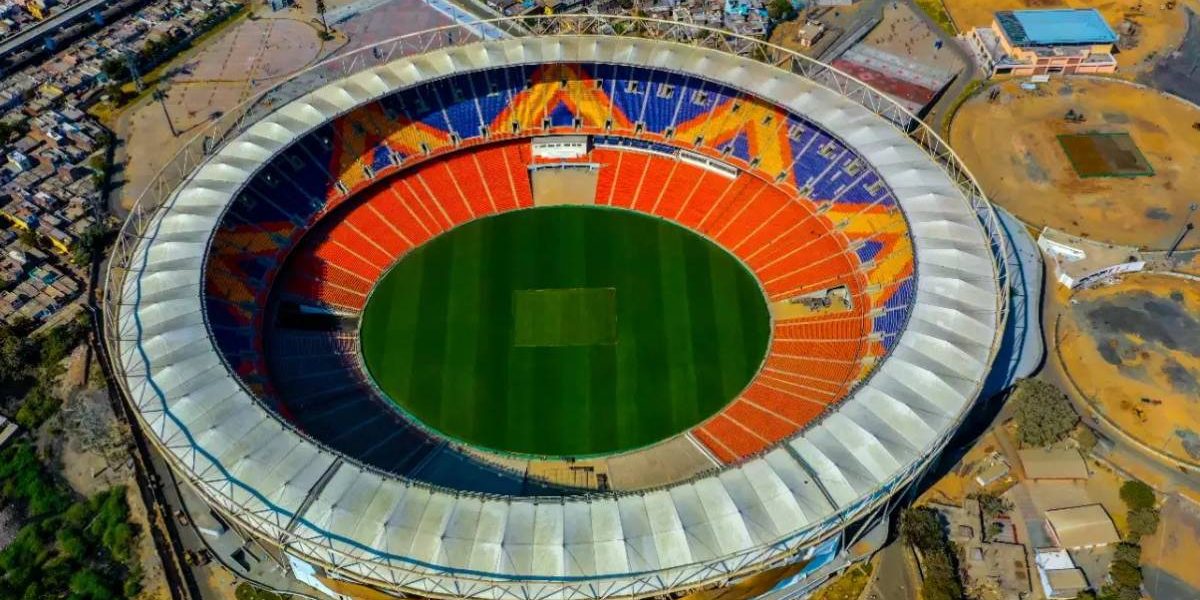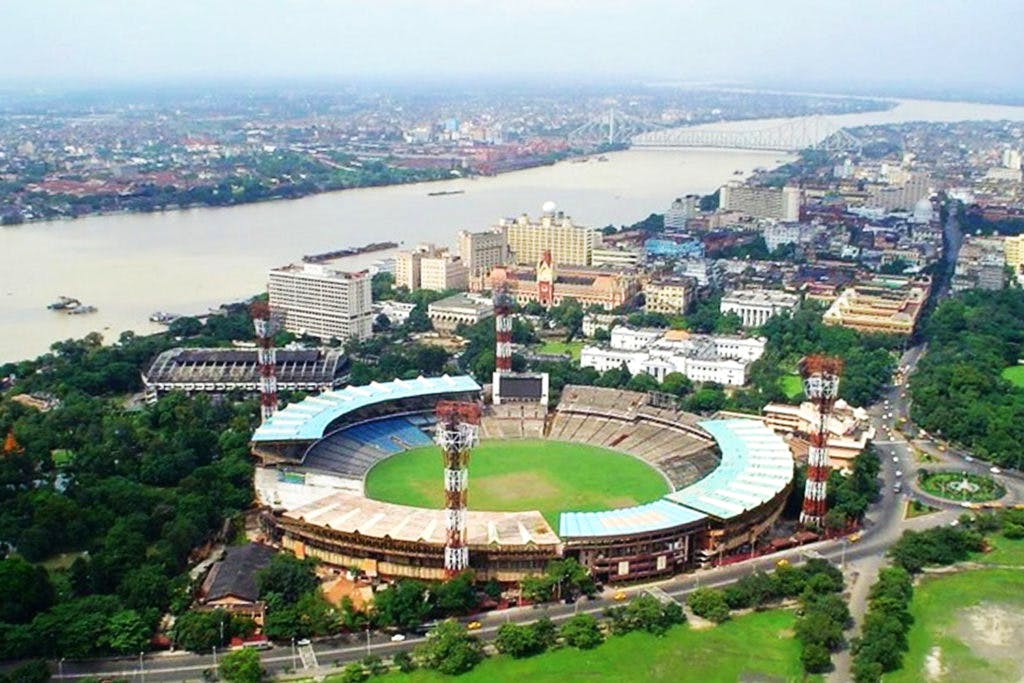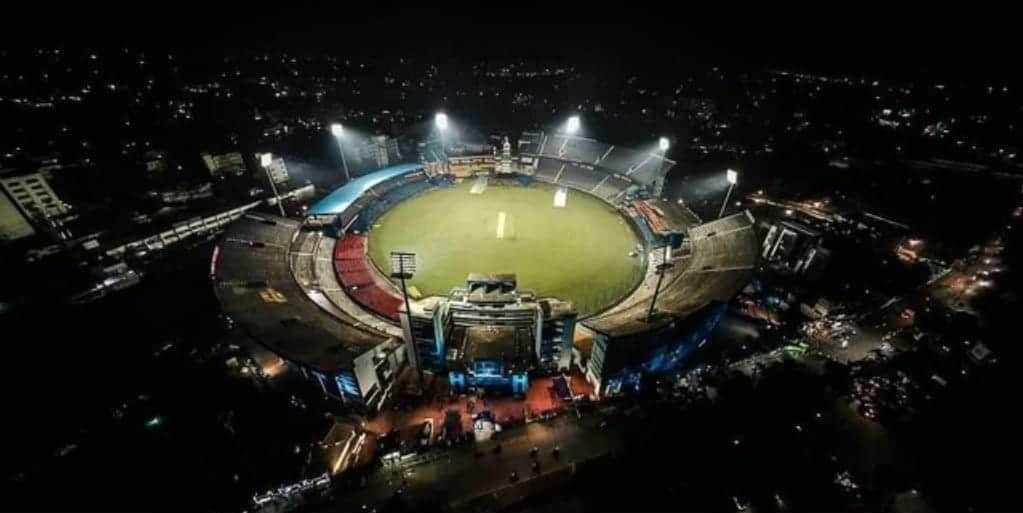Top 3 cricket ground in the world

Sardar Patel Stadium,
The Sardar Patel Stadium, also known as the Motera Stadium, is a cricket stadium located in Ahmedabad, Gujarat, India. It is the largest cricket stadium in the world by seating capacity. The stadium was originally built in 1983 with a seating capacity of around 49,000 spectators.

However, the stadium underwent a massive redevelopment project, and a new stadium was constructed on the same site. The new Sardar Patel Stadium was inaugurated in February 2020. It is a state-of-the-art facility with a seating capacity of approximately 110,000 spectators, surpassing the Melbourne Cricket Ground in Australia, which previously held the record for the largest cricket stadium.
The redevelopment of the stadium was carried out by the Gujarat Cricket Association (GCA) under the guidance of the Board of Control for Cricket in India (BCCI). The stadium was renamed the Sardar Patel Stadium in honor of Vallabhbhai Patel, who was an instrumental figure in the Indian independence movement and the country's first Deputy Prime Minister and first Minister of Home Affairs.
The design of the stadium is visually striking, with its unique circular structure and a futuristic-looking exterior. It boasts several world-class facilities, including state-of-the-art dressing rooms, practice pitches, a clubhouse, a media center, and modern amenities for spectators. The stadium also has a 360-degree LED screen and improved acoustics for an enhanced viewing experience.
The Sardar Patel Stadium has already hosted several high-profile cricket matches and tournaments. It hosted its first international match, a T20I between India and Sri Lanka, in March 2020. The stadium has also been selected as a venue for the 2023 ICC Cricket World Cup, where it will host several matches, including the final.
Apart from cricket, the stadium is expected to host other sporting events and cultural activities, further establishing itself as a major multi-purpose venue in India. The Sardar Patel Stadium stands as a testament to India's passion for cricket and its commitment to developing world-class sporting infrastructure.
Eden Gardens Stadium,
Eden Gardens is a famous cricket stadium located in Kolkata, West Bengal, India. It is one of the oldest and largest cricket stadiums in the world, known for its rich history and passionate cricket culture. Here's some information about Eden Gardens stadium:

-
History: Eden Gardens was established in 1864 and is named after the nearby Eden Gardens, a large park. Originally, it was a vast ground used for various sports like football and athletics. The first recorded cricket match was played at the venue in 1865.
-
Capacity: The stadium has a seating capacity of around 66,349 spectators, making it one of the largest cricket stadiums in terms of capacity. It has undergone several renovations and expansions over the years to accommodate more fans.
-
Home Ground: Eden Gardens serves as the home ground for the Bengal cricket team and the Kolkata Knight Riders (KKR), a franchise in the Indian Premier League (IPL). The stadium has witnessed numerous memorable matches, both international and domestic, including the IPL finals.
-
Record Attendance: The highest attendance recorded at Eden Gardens was during the 1996 Cricket World Cup semifinal between India and Sri Lanka, with an estimated 110,000 spectators. However, due to safety regulations, the stadium's seating capacity has been reduced since then.
-
Pitch and Conditions: Eden Gardens has traditionally been known for its spin-friendly pitches. The soil composition and weather conditions in Kolkata make it favorable for spinners. The pitch at Eden Gardens has witnessed many thrilling encounters and has often provided an interesting contest between bat and ball.
-
Historic Matches: The stadium has hosted numerous iconic cricket matches over the years. One of the most memorable matches was the 2001 Test between India and Australia, famously known as the "VVS Laxman's 281" match, where India came back from follow-on to win the game. Eden Gardens also hosted the 1987 World Cup final between Australia and England.
-
Architecture: The stadium features a distinct three-tiered design, with most of the seating being covered. The iconic clubhouse, known as the "B.C. Roy Club House," is located at one end of the stadium and provides a panoramic view of the ground.
-
Renovations: Eden Gardens has undergone several renovations and modernizations to meet international standards. The most significant renovation took place in preparation for the 2011 ICC Cricket World Cup, where the stadium's capacity was increased and new facilities were added.
-
Atmosphere: The atmosphere at Eden Gardens during cricket matches is electric. The passionate Kolkata crowd, known as the "12th man," creates an intense and vocal environment, supporting their teams with fervor. The stadium's proximity to the city center adds to the lively atmosphere.
-
Other Events: Apart from cricket, Eden Gardens has hosted various other events, including football matches, concerts, and political rallies. It has welcomed international artists and hosted performances by renowned musicians and bands.
Eden Gardens holds a special place in the hearts of cricket fans around the world due to its historical significance, unique atmosphere, and the incredible matches it has witnessed over the years.
Barabati Stadium,
Barabati Stadium is a cricket stadium located in Cuttack, Odisha, India. It is one of the most prominent cricket venues in the state and has a seating capacity of around 45,000 spectators. The stadium is owned and operated by the Odisha Cricket Association (OCA).

The stadium was established in 1958 and has since hosted numerous domestic and international cricket matches. It has witnessed several memorable cricketing moments over the years. Barabati Stadium has also hosted a few One Day Internationals (ODIs) and Twenty20 Internationals (T20Is).
The ground is known for its electrifying atmosphere during matches, with passionate cricket fans filling the stands and creating an incredible ambiance. The stadium has undergone several renovations and improvements to meet international standards and provide a comfortable viewing experience for spectators.
Barabati Stadium is named after the nearby Barabati Fort, a historical structure that stands adjacent to the stadium. The fort, built in the 14th century, adds to the scenic beauty and historical significance of the stadium.
Apart from cricket, the stadium has also hosted other sporting events, including football matches and athletic competitions. It has been a popular venue for various cultural and entertainment events as well.
Barabati Stadium holds a special place in the hearts of cricket enthusiasts in Odisha and continues to be an important venue for domestic and international cricket matches, showcasing the passion and love for the sport in the region.








